History
The two locomotives were built in 1916 at the Sächsischen Maschinenfabrik, formerly Hartmann.
The undercarriage of the locomotives was unusual. Instead of an alternative proposal for a twelve-coupled locomotive with sideways-sliding Gölsdorf axles, as was realised a year later in the shape of the Württemberg K, the Saxon Railways decided on a proposal by their head of the engineering department, Lindner, for a design that was unique in Germany: the Saxon XV HTV was given two, fixed, six-coupled drives. This was mainly because they had doubts about the suitability of the Gölsdorf system for twelve-couplers. The outside axles were designed as Klien-Lindner axles and could be slid sideways by about 37 mm (1.5 in) from their centre position. The design of these axles required them to be fixed into an outside frame. In the centre of the locomotive was a double cylinder on each side, each with a high-pressure cylinder for the rear and a low-pressure cylinder for the front drive.
This design with its low stress on the rails, low inherent resistance and simple weight compensation was promising especially as it also avoided the use of cranked driving axles. Similar thoughts in the USA during the 1930s led to the development of duplex locomotives. Because the cylinders of adjacent axles also had 28 mm (1.1 in) of side play, the locomotive could negotiate radii of as little as 170 m (560 ft). Through the special design of the cylinders, the use of crank axles (Kropfachse) was avoided. Whilst this design enabled the steam lines between the high- and low-pressure cylinders to be extremely short, long admission and exhaust tubes were necessary.
The XV HTV soon proved to be expensive to maintain, particularly concerning the drives and the hollow axles; as a result no more were procured. Even the usual tendency of all compound engines to sway could not be eliminated by the Klien-Lindner configuration. Wear and tear on the wheel tyres changed the crank settings of the driving gear. That meant that the synchronisation of the drive had to be constantly adjusted, to ensure a balanced distribution of effort.
Nevertheless, the engines were successful in practice. They had impressive riding qualities right up to their top speed and wear and tear on the wheel flanges was low. The Deutsche Reichsbahn took both locomotives over as 79 001 and 79 002, but retired them by 1932.
The serial number 79 001 was allocated from 1938 to 1947 to BLE No. 44 of the former Brunswick State Railway Company and from 1951 it was given to the former French locomotive, 1-242.TA.602, which ended up in German hands after World War II.
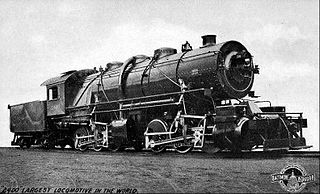
Under the Whyte notation for the classification of steam locomotives, a 0-6-6-0 wheel arrangement refers to a locomotive with two engine units mounted under a rigid locomotive frame, with the front engine unit pivoting and each engine unit with six coupled driving wheels without any leading or trailing wheels. The wheel arrangement was mostly used to describe Mallet locomotive types and in some occasions, Double Fairlie locomotives.
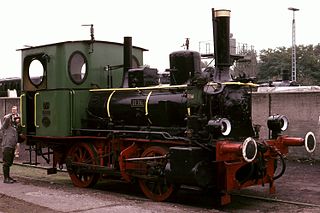
The Bavarian Class D VI were German, 0-4-0, steam locomotives of the Royal Bavarian State Railways. They were light, twin-coupled, saturated steam, tank engines. Maffei supplied the first 30 locomotives from 1880 to 1883, and Krauss delivered a further 23 up to 1894.

The Klien-Lindner axle is a special type of hollow driving axle on steam locomotives that enable better curve running due to its ability to slide transversely. It was developed by the German engineers, Ewald Klien and Heinrich Lindner, of the Royal Saxon State Railways.

After the Second World War, the Deutsche Reichsbahn in East Germany had a requirement for powerful goods train locomotives with a 15-18 tonne axle load for routes in the Mittelgebirge, the mountainous areas in the south of the country. As a result, the DR Class 58.30 emerged, as part of the so-called 'reconstruction programme', based on rebuilds of the former Prussian G 12 locomotives. Between 1958 and 1962, 56 locomotives, originally from various state railways were converted at the former repair shop, RAW Zwickau.
The Saxon Class XVIII was a German six-coupled tender locomotive built for the Royal Saxon State Railways in 1917/18 for express train services. The Deutsche Reichsbahn grouped them in 1925 into DRG Class 18.0.
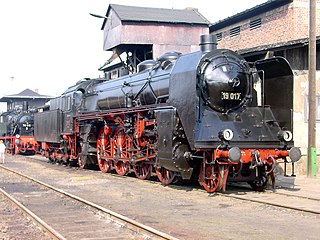
The Saxon Class XX Failed to parse : {\displaystyle \textstyle \mathfrak{H}} were German eight-coupled express train, tender locomotives built for the Royal Saxon State Railways just after the First World War. The locomotives, which became known as the 'Pride of Saxony' (Sachsenstolz) were the first and only German express locomotives with a 2-8-2 wheel arrangement and, at the time of their appearance, were the largest express engines in the whole of Europe. In 1925, the Deutsche Reichsbahn grouped these locomotive into their DRG Class 19.0.
The Saxon Class IX was a class of German, eight-coupled, tender locomotives built for the Royal Saxon State Railways for goods train duties.
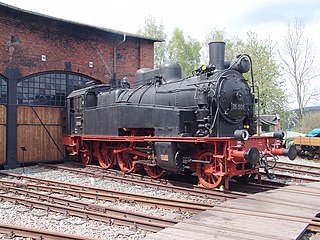
The Saxon Class XIV T locomotives were six-coupled tank engines operated by the Royal Saxon State Railways for mixed duties on main and branch lines. In 1925, the Deutsche Reichsbahn grouped them into their DRG Class 75.5.
Locomotive No. 44 of the Brunswick State Railway Company was a tank locomotive for mixed passenger and goods traffic. The locomotive, built in 1934 by Krupp, had a 2-8-2T wheel arrangement and a two-cylinder superheated engine. Leading and trailing wheels were housed in a Bissel bogie. Rather unusual for such a locomotive were the smoke deflectors which were attached directly to the side tanks and extended as far as the front buffer beam.

The Saxon Class V K were German 0-8-0T narrow gauge steam locomotives operated by the Royal Saxon State Railways which had been primarily intended for the Müglitztalbahn. In 1925 the Deutsche Reichsbahn incorporated arranged these locomotives as DRG Class 99.61.
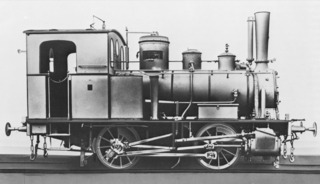
The Baden Class I e locomotives with the Grand Duchy of Baden State Railways were twin-axled tank engines that were built by the Maschinenbaugesellschaft Karlsruhe for duties on branch lines.
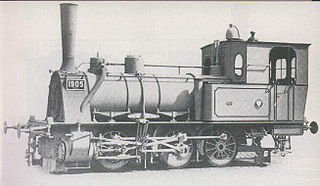
The Prussian Class T 3 steam locomotives procured for the Prussian state railways were 0-6-0 tank locomotives. Together with the Prussian T 2 they were the first locomotives that were built to railway norms. The first units were delivered by Henschel in 1882.

The Gölsdorf axle system is used on railway Gölsdorf locomotives to achieve quiet running and low wear-and-tear when negotiating curves. The axle system comprises a combination of fixed axles and axles that can slide transversely, all within a single, rigid locomotive frame. The system was invented by a young Austrian locomotive builder, Karl Gölsdorf, around the end of the 19th century. The first locomotive to use this principle entered service in 1897.

The Saxon Class IIIb was a twin-coupled tender locomotive built for passenger services with the Royal Saxon State Railways.

The Saxon Class V was a triple-coupled, goods train, tender locomotive operated by the Royal Saxon State Railways. In 1925, the Deutsche Reichsbahn regrouped the locomotives 25 into their DRG Class 53.6–7.
The Royal Saxon State Railway designated four-coupled tank locomotives for passenger train service as class IV T (four-T), and the Deutsche Reichsbahn subsequently grouped these locomotives into DRG Class 71.3 in 1925.
The class IV f locomotives of the Grand Duchy of Baden State Railway were express locomotives with a 4-6-2 (Pacific) wheel arrangement. They later passed to the Deutsche Reichsbahn, who classified them as class 18.2. These were the first Pacific locomotives in Germany and the second in Europe after the Paris-Orléans Railway 4500-series that had appeared a few months earlier.

The class IV h (four-h) locomotives of the Grand Duchy of Baden State Railway (German: Großherzoglich Badische Staatseisenbahnen, G.Bad.St.E.) were express locomotives with a 4-6-2 (Pacific) wheel arrangement. They later passed to the Deutsche Reichsbahn, who classified them as class 183.
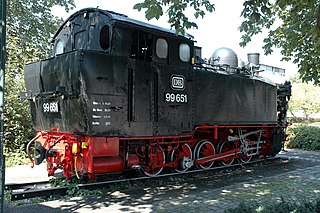
The Saxon VI K were a class of 750-mm gauge 0-10-0T locomotives of the Royal Saxon States Railways with a gauge of 750 mm. In 1925 the Deutsche Reichsbahn (DRG) grouped the locomotives into class 99.64–65; from 1923 to 1927 the procured more locomotives of this type which were grouped in to class 99.67–71.
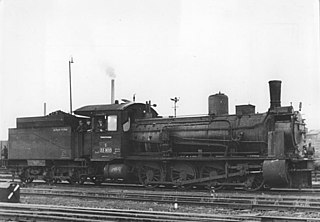
The Prussian G 7.2 was a class of 0-8-0 tender compound locomotives of the Prussian state railways. In the 1925 renumbering plan of Deutsche Reichsbahn, the former Prussian locomotives produced from 1895 to 1911 were given the class designation 55.7–13; while the locomotives of former Mecklenburgische Friedrich-Franz-Eisenbahn (MFFE) locomotives were classified as 55.57.














